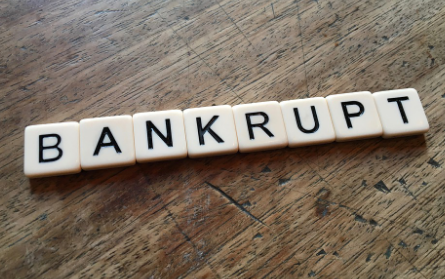Unsecured Creditors in Retail Bankruptcy Lose Out
The Importance of Being a Secured Creditor in Today’s Retail Climate In today’s highly credit-based economy, the looming threat of debtor bankruptcy...

We recently asked our clients whether the COVID-19 pandemic is impacting their credit-granting processes. While I expected to see an increase in collection efforts and more stringent credit-granting processes, I was surprised to see over 70% of respondents indicate they are not filing more UCCs and/or mechanic’s liens as a result of the current economic conditions.
1. Has your current credit-granting process become more stringent due to COVID-19?
Over 56% of respondents advised their credit-granting processes have become more stringent. In any kind of economic downturn, credit-granting processes should be reevaluated and buttoned up where necessary. If you haven’t taken this opportunity to review your process, you should. This should include reviewing payment history, an understanding of the debtor’s cash flow, and ensuring secured transactions are implemented at the time credit is granted.
2. Have you received requests for extending payment terms from your customer?
An overwhelming 75% of respondents said yes, they are receiving requests to extend payment terms. This is of no surprise. When cash slows, folks start asking creditors for some leeway with payment terms. While it may not be a big deal to grant one customer extended terms, can you afford to grant every customer extended terms? You need a clear idea of how “extended” you can go and whether you have the cashflow to sustain these long payment periods.
Extending terms can quickly snowball out of control – your customers ask you for extended terms, eventually you ask your own creditors for extended terms, then your creditors are asking the same… you can see how this can quickly get out of control.
It’s important you also keep in mind the longer credit terms are, the older a receivable becomes; the older a receivable becomes, the harder it is to collect.
3. Have you increased the frequency of credit checks on your customers?
Only 46% of respondents have increased the frequency of credit checks. Initially I didn’t think much of this statistic; I didn’t find it alarming. But then I took a moment to reflect on the bankruptcies we’ve been seeing. This year we are seeing well-known, long-standing companies succumb to bankruptcy. Healthcare, retail, and foodservice industries have been hit especially hard lately.
You should be evaluating your existing customers’ credit on a regular basis. Whether you check quarterly on higher risk clients and semi-annually or annually on lower risk clients, it is in your company’s best interest that you maintain a current credit picture on all customers.
4. Are you monitoring your customers for bankruptcy?
38% of respondents advised they are not monitoring their customers for bankruptcy, while 62% indicated they are. Monitoring your customers for bankruptcy is an excellent practice. Especially in the event a bankruptcy is filed because bankruptcy proof of claim deadlines can sneak up fast. If you aren’t currently monitoring your customers, you should be.
These next two survey questions go hand in hand, so I’d like to review them as a pair. I’d rather see these statistics inversed. Ideally, folks would be using secured transactions and that would reduce the need for additional collection efforts.
5. Are you filing more UCCs and/or mechanic’s liens because of current economic conditions?
Over 70% of respondents have not filed more UCCs or mechanic’s liens.
6. Have you increased your collection efforts?
76% of respondents have increased their collection efforts, and 24% have not.
I mentioned earlier that I wasn’t too surprised to see an uptick in collection efforts and more stringent credit-granting processes. But I am surprised that UCC filings and mechanic’s lien activity are down. Because the UCC filing and mechanic’s lien filing processes are two of the greatest proactive risk-mitigating tools available, vastly improving collectability of receivables.
For those of us in credit from 2008-2010 (during the recession), we saw firsthand how devastating the impact unsecured receivables could have on a business. Why would we open ourselves back up to that kind of heartache? If we learned anything from 10 years ago, it should be that we need to implement proactive protective measures and practice them regularly.
I’m going to leave you with one last statistic. I keep this statistic written on a sticky note at my desk, to serve a staunch reminder that my goal is to ensure I’m providing you with the information necessary to improve your credit-granting processes.
Did You Know: 30% of business failure is due to poor credit-granting practices.

The Importance of Being a Secured Creditor in Today’s Retail Climate In today’s highly credit-based economy, the looming threat of debtor bankruptcy...

COVID-19 and Your Credit Management Arsenal If you extend credit, you are vulnerable to risk — whether furnishing to a single construction project or...

Bankruptcies Are on the Rise; Remember Your Bankruptcy Proof of Claim It’s “officially” unofficial, we may be heading into another recession. Think...